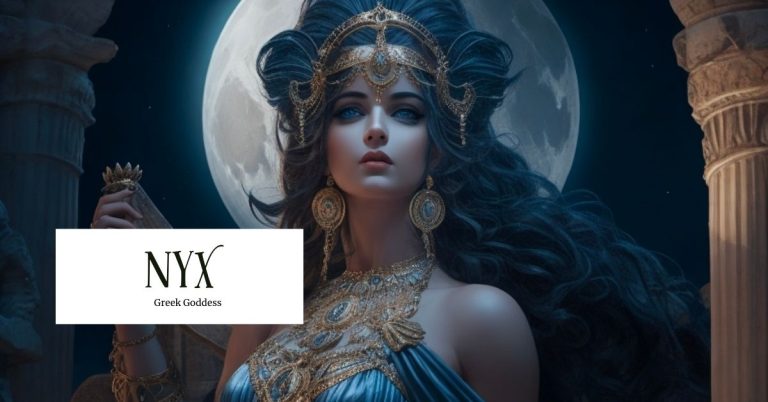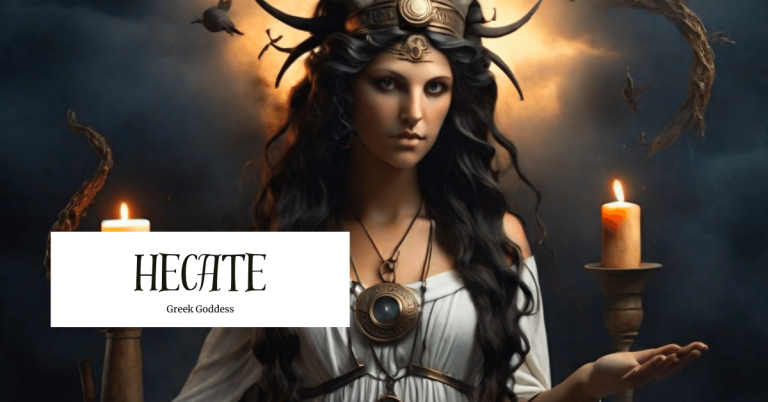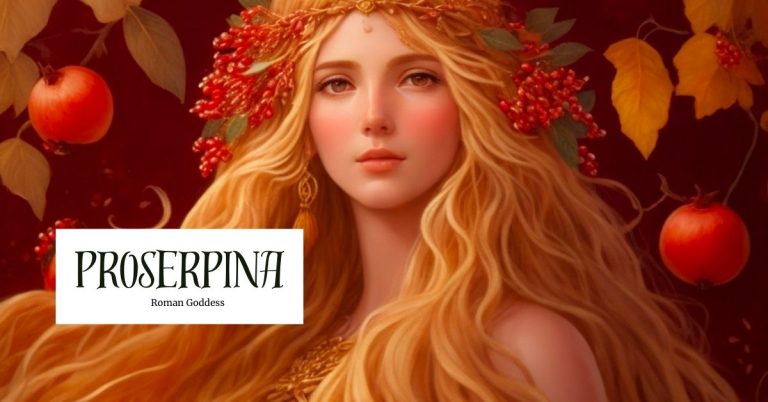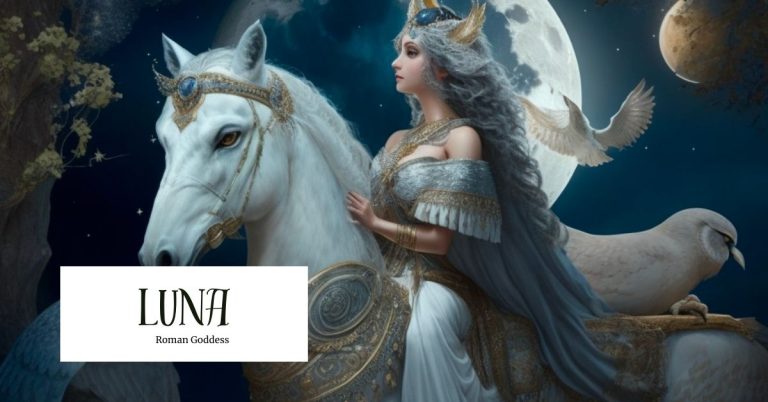Juno: The Goddess Of Marriage And Queen Of The Gods
Juno, the most powerful Roman goddess, reigns as the divine embodiment of marriage, childbirth, and queenly virtues. With her unwavering grace and regal authority, she holds a revered position within the Roman pantheon. Let us delve into the captivating realm of Juno, exploring her multifaceted identity and the significance she held in ancient Roman society.
Source: The Getty Museum
This marble statue of Juno by Joseph Nollekens in 1776, shows Juno undoing her dress for Paris’s judgment as to which goddess was the most beautiful. The statue originally stood with three other statues of Minerva, Venus, and Paris.
Overview of Juno
Juno, also known as Juno Regina, was considered the queen of the gods in Roman mythology. She was the daughter of Saturn and Ops, and the sister and wife of Jupiter, the king of the gods. Often depicted as a majestic and radiant figure, Juno commanded respect and reverence as the protectress of women and the guardian of matrimony. She embodied fertility, motherhood, and the well-being of the Roman state.
Titles
- Queen of Heaven
- Goddess of Marriage
- Protector of Women
- Goddess of Childbirth
- Patroness of Matrimony
- Goddess of Fertility
- Guardian of Rome
- Queen of the Gods
Abilities
Juno, the Roman goddess of marriage and queen of the gods, possesses a formidable array of abilities befitting her exalted position. With her divine influence, she can bless and protect marriages, ensuring harmony and fertility within unions. Juno’s watchful gaze extends to childbirth, providing assistance and safeguarding the well-being of both mother and child. As the queen of the gods, she possesses great political acumen and holds sway over the affairs of the Roman state. Juno’s abilities encompass both the celestial and earthly realms, reflecting her vast dominion and power.
Characteristics
Juno’s majestic presence exudes an aura of regal authority and timeless beauty. Adorned in resplendent attire, she is often depicted wearing a diadem or crown symbolizing her royal status. Her countenance radiates grace and wisdom, her eyes revealing both compassion and sternness. Juno’s golden hair cascades in elegant waves, accentuating her celestial nature. With an upright bearing and a dignified poise, she embodies the ideals of nobility and sovereignty. Her physical form reflects the majesty and grandeur befitting the queen of the gods.
Traits
Juno’s multifaceted personality encompasses various traits that define her divine character. She embodies the virtues of fidelity and loyalty, valuing the sacred bond of marriage and the commitment it entails. Juno displays a protective and nurturing nature, safeguarding the sanctity of childbirth and ensuring the welfare of mothers and infants. However, she is also known for her strong will and assertiveness, demonstrating a tenacious spirit when defending her rights and the honor of married women. Juno’s presence evokes both reverence and awe, revealing a goddess who commands respect and demands devotion.
Symbols
Source: MythDancer
Juno is associated with a rich tapestry of symbols that encapsulate her essence and significance. Peacock feathers symbolize her regal nature, their vibrant hues mirroring her royal bearing. The pomegranate represents fertility and abundance, signifying Juno’s role in facilitating fruitful unions and ensuring the continuity of generations. Additionally, the diadem or crown serves as a potent symbol of her status as queen of the gods. These symbols serve as reminders of Juno’s authority, influence, and her pivotal role in matters of marriage and the divine realm.
Festivals and Rituals
Festivals and rituals dedicated to Juno held a prominent place in ancient Roman religious practices. One of the most significant annual festivals honoring Juno was the Matronalia, celebrated on March 1st. During this festival, married women would offer prayers and sacrifices to Juno in her role as the patroness of married life and childbirth. It was a time of rejoicing and honoring the divine blessings bestowed upon women in their roles as wives and mothers.
Another important festival was the Nonae Caprotinae, held on July 7th, which involved the offering of figs and other fruits to Juno Caprotina. The term “Caprotina” signifies the connection of Juno with fertility and the nurturing aspects of nature. Additionally, the Junonalia, also celebrated on July 7th, involved processions and rituals to honor Juno as the queen of the gods and protector of the Roman state. These festivals provided an opportunity for the Roman people to express their devotion, seek Juno’s blessings, and reinforce the importance of marriage and family in Roman society.
Legends Associated with Juno
With her authority and influence, Juno played a pivotal role in shaping the destiny of Rome and the lives of its inhabitants. Let’s delve into the captivating realm of Juno, exploring her divine attributes and some of the most important legends associated with this formidable goddess.
Source: World Book
This statue in Sokyryntsi, Ukraine shows Juno holding the golden apple of discord. In Greek mythology, the apple was inscribed with “For the Fairest.” Three goddesses, Juno (Hera), Minerva (Athena), and Venus (Aphrodite), fought over it. They asked Prince Paris of Troy to decide. Juno promised power, Minerva offered wisdom and skill, and Venus tempted him with the love of Helen of Sparta. Paris chose Venus, leading to Helen’s abduction and the Trojan War which lead to a lot of tragedy and destruction. The story reveals Juno’s desire for recognition and her involvement in the events that sparked the war.
Origin Story
In Roman mythology, Juno’s origin story is closely tied to the creation of the gods and the universe. She is considered the daughter of Saturn (also known as Cronus in Greek mythology) and Ops (Rhea), making her part of the second generation of gods known as the Titans. Juno’s father Saturn ruled over the Titans until he was overthrown by his son Jupiter (Zeus).
When Jupiter ascended to power, he married Juno, making her both his sister and wife. This union elevated Juno to the position of queen of the gods. Together, Juno and Jupiter formed a divine couple with immense influence and authority in Roman mythology.
Juno’s role as the goddess of marriage and her association with fertility and women’s protection became central to her mythology. She became the guardian of marriage and childbirth, ensuring the well-being of married couples and overseeing the birth of children. Juno’s divine authority extended to the Roman state, as she was seen as a protectress and guardian of Rome. In the Roman version of Juno’s origin story, her lineage, marriage to Jupiter, and her subsequent roles as queen of the gods and protector of marriage and women are key aspects that define her character and significance in Roman mythology.
The Sabine Women
One of the most renowned legends linked to Juno is the story of the Sabine Women. After the founding of Rome, Romulus and his men sought to secure wives for themselves. They abducted the women of the neighboring Sabine tribe during a festival. Juno plays a crucial role as the protector of the Sabine women. She sympathized with their plight and sought to bring an end to the conflict. Appearing to the women, Juno urged them to make peace and accept their fate as Roman wives, highlighting the importance of unity and family bonds. Through Juno’s intervention, the Sabine women, moved by her plea, intervened in the midst of the battle between their Roman husbands and Sabine fathers and brothers. They successfully reconciled the warring factions, fostering peace and creating an alliance between the Romans and the Sabines. The tale of the Sabine women portrays Juno’s influence as a goddess of marriage and her commitment to maintaining harmony in relationships. Juno’s intervention emphasizes the significance of unity and the transformative power of compassion and understanding, ultimately shaping the future of Rome and solidifying its foundation as a united city.
Juno and the Peacock
Another captivating legend centers around Juno and the Peacock. In this tale, Juno discovered Jupiter’s (Zeus) infidelity with the nymph Io. Juno, suspicious of her husband’s actions, transformed Io into a heifer. As a result, Jupiter gifted the heifer to Juno. She entrusted Io’s care to Argus, a giant with a hundred eyes. However, Jupiter dispatched Mercury to rescue Io. Mercury lulled Argus to sleep and slew him, liberating Io. In her grief, Juno adorned the peacock’s tail with the eyes of Argus, forever making it a symbol of her watchfulness and divine protection.
Notably, Despite Jupiter’s infidelity, Juno remained a steadfast and dignified goddess, representing commitment and loyalty. Their union symbolized the sacred bond of marriage and the balance of power in the divine realm
The Birth of Mars
Juno’s association with childbirth is evident in the legend of the birth of Mars, the Roman god of war. In this myth, Juno, longing to have a child without Jupiter’s involvement, sought the help of the goddess Flora. Flora granted Juno a magical flower, which Juno placed upon her belly. From this flower, Mars was born, becoming a powerful deity who played a significant role in Roman military affairs.
Influences of other religions/cultures on Juno
Throughout history, religions and cultures have often influenced and interacted with one another, leading to the assimilation and integration of beliefs and practices. Juno was not exempt from this phenomenon. As Rome expanded its influence, it encountered various cultures and religions, which in turn influenced the perception and worship of Juno.
For instance, Juno’s association with marriage drew parallels from the Greek goddess Hera, leading to the assimilation of some of Hera’s attributes into the Roman understanding of Juno. Additionally, the Etruscans, an ancient civilization in Italy, had their own goddesses associated with aspects similar to Juno, leading to potential syncretism between their deities. These influences from other religions and cultures enriched the understanding of Juno, adding depth and complexity to her mythology. The rise of Christianity also significantly influenced the Roman religious landscape, including the perception of Juno, leading to a decline in her worship.
Modern Appearances
Juno’s modern appearances transcend ancient mythology, enriching our cultural landscape and inviting us to explore her timeless themes of love, family, and feminine power.
Culture
Juno’s essence remains in modern culture, from weddings to space missions!
June
The month of June is named after Juno. In the Roman calendar, June was originally the fourth month and was called “Junius” in Latin. The month of June was considered an auspicious time for weddings (as it is today!) and celebrations related to Juno’s domain. Over time, the name “Junius” eventually evolved into “June” in the English language.
Juno to Jupiter
NASA named one of their spacecraft set to explore Jupiter after Juno, and the Juno Mission arrived at Jupiter in 2016. The choice of the name Juno reflects the mission’s focus on studying Jupiter, who was married to Juno in Roman mythology. The Juno spacecraft’s exploration of Jupiter aligns with the goddess’s connection to fertility and marriage. Just as Juno was associated with the creation of new life and the union of couples, the NASA Juno mission delves into the mysteries of Jupiter, a colossal celestial body that holds vital clues about the formation of our solar system.
Literature
The following examples demonstrate how modern authors continue to draw inspiration from Juno and blend ancient mythology with contemporary storytelling. Juno’s character and influence add depth and complexity to the narratives, exploring themes of power, marriage, and the intricacies of the divine realm.
The Goddesses of Kitchen Avenue by Barbara Samuel
In this contemporary novel, the protagonist, Ginger, discovers her connection to the Roman goddess Juno and learns to embrace her inner strength and resilience. Juno’s themes of marriage, femininity, and personal growth are woven into the story.
American Gods by Neil Gaiman
While primarily focused on gods from various mythologies, including Norse and Egyptian, Juno briefly appears as one of the deities encountered by the protagonist, Shadow Moon. Juno’s presence emphasizes the diverse pantheon of gods in the novel.
The Song of Achilles by Madeline Miller
In this retelling of the Trojan War, Juno, (represented as her Greek counterpart, Hera) appears as a prominent character, exerting her influence and causing conflicts among the gods. Juno’s desire for revenge and her rivalry with other deities shape the events of the story.
The House of the Vestals by Steven Saylor
Part of the Roma Sub Rosa series, this collection of short stories features the Roman detective Gordianus the Finder. One of the stories, “Little Caesar and the Pirates,” involves a young Julius Caesar encountering Juno’s sacred geese, leading to an intriguing investigation.
Final Thoughts
Juno remains a captivating figure in our modern cultural landscape. From her appearances in various art forms to weddings celebrated in June, Juno continues to inspire and resonate with audiences today. Her timeless themes of love, commitment, and the power of family endure, reminding us of the profound human experiences she represents. As we delve into Juno’s multifaceted character, we discover a deity whose influence transcends time, inviting us to embrace our own inner strength, cherish the bonds we form, and celebrate the enduring power of love and marriage.
References
Beard, M., North, J., & Price, S. (1998). Religions of Rome: A History. Cambridge University Press.
Cover, Natasha. “Juno: The Wrathful Matron”, MythDancer: Bringing Myths to the Modern World, April 25, 2016, http://mythdancer.blogspot.com/2016/04/juno-wrathful-matron.html. Accessed July 11, 2023.
Dillon, M., & Garland, L. (Eds.). (2005). Ancient Rome: From the Early Republic to the Assassination of Julius Caesar. Routledge.
Fowler, W. W. (2004). Roman Religion: From its Origins to the End of the Republic. Routledge.
Kahil, Lilly. “LIMC-France (Lexicon Iconographicum Mythologiae Classicae).” (1996-2009). Juno. Retrieved from http://www.limc-france.fr/ark:/86869/U85270. Accessed July 10, 2023.
Orlin, E. M. (2002). Temples, Religion, and Politics in the Roman Republic. Brill.
Stapleton, M. L. (2012). Worshiping the Gods: Religion and Devotion in Ancient Rome. Yale University Press.
Turcan, R. (2001). The Gods of Ancient Rome: Religion in Everyday Life from Archaic to Imperial Times. Routledge.
World Book. “Mythic Monday: Vigilant Juno”, June 16, 2017, https://www.worldbook.com/behind-the-headlines/Mythic-Monday-Vigilant-Juno. Accessed July 11, 2023.







